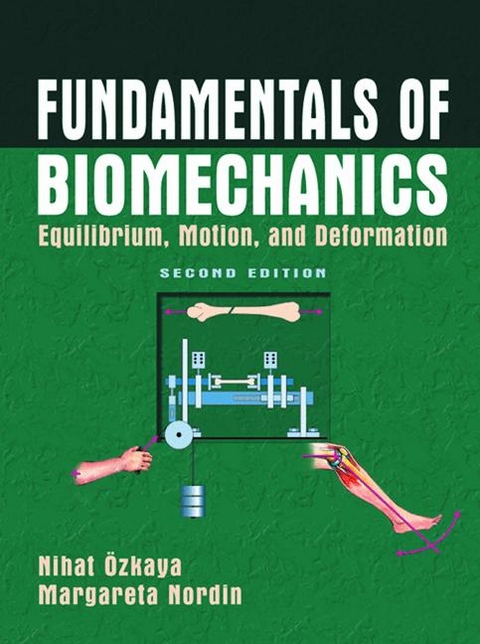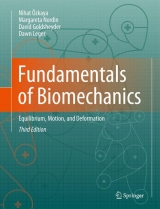
Fundamentals of Biomechanics
Equilibrium, Motion and Deformation
Seiten
1999
|
2nd ed.
Springer-Verlag New York Inc.
9780387982830 (ISBN)
Springer-Verlag New York Inc.
9780387982830 (ISBN)
- Titel erscheint in neuer Auflage
- Artikel merken
Zu diesem Artikel existiert eine Nachauflage
Providing the quantitative perspective, this book integrates the classic field of mechanics to the properties of living systems, using examples from biology and medicine, and featuring clear illustrations.
Biomechanics applies the principles and rigor of engineering to the mechanical properties of living systems. This book integrates the classic fields of mechanics - statics, dynamics, and strength of materials-using examples from biology and medicine. "Fundamentals of Biomechanics" is excellent for teaching either undergraduates in biomedical engineering programs or health care professionals studying biomechanics at the graduate level. Extensively revised from a successful first edition, the book features a wealth of clear illustrations, numerous worked examples, and many problem sets. The book provides the quantitative perspective missing from more descriptive texts, without requiring an advanced background in mathematics. It will be welcomed for use in courses such as biomechanics and orthopedics, rehabilitation and industrial engineering, and occupational or sports medicine.
Biomechanics applies the principles and rigor of engineering to the mechanical properties of living systems. This book integrates the classic fields of mechanics - statics, dynamics, and strength of materials-using examples from biology and medicine. "Fundamentals of Biomechanics" is excellent for teaching either undergraduates in biomedical engineering programs or health care professionals studying biomechanics at the graduate level. Extensively revised from a successful first edition, the book features a wealth of clear illustrations, numerous worked examples, and many problem sets. The book provides the quantitative perspective missing from more descriptive texts, without requiring an advanced background in mathematics. It will be welcomed for use in courses such as biomechanics and orthopedics, rehabilitation and industrial engineering, and occupational or sports medicine.
1. Introduction. 2. Force Vector. 3. Moment and Torque Vectors. 4. Statics: Analyses of Systems in Equilibrium. 5. Applications of Statics to Biomechanics. 6. Introduction to Deformable Body Mechanics. 7. Stress and Strain. 8. Multiaxial Deformations and Stress Analyses. 9. Mechanical Properties of Biological Tissues. 10. Introduction to Dynamics. 11. Linear Kinematics. 12. Linear Kinetics. 13 Angular Kinematics. 14 Angular Kinetics. 15. Impulse and Momentum. Appendices.
| Erscheint lt. Verlag | 1.7.1999 |
|---|---|
| Vorwort | Victor H. Frankel, Richard Skalak |
| Zusatzinfo | 500 black & white illustrations, 29 black & white tables |
| Verlagsort | New York, NY |
| Sprache | englisch |
| Maße | 216 x 279 mm |
| Gewicht | 1272 g |
| Einbandart | gebunden |
| Themenwelt | Medizin / Pharmazie ► Medizinische Fachgebiete ► Sportmedizin |
| Medizin / Pharmazie ► Physiotherapie / Ergotherapie ► Orthopädie | |
| Studium ► 1. Studienabschnitt (Vorklinik) ► Physiologie | |
| ISBN-13 | 9780387982830 / 9780387982830 |
| Zustand | Neuware |
| Informationen gemäß Produktsicherheitsverordnung (GPSR) | |
| Haben Sie eine Frage zum Produkt? |
Mehr entdecken
aus dem Bereich
aus dem Bereich



